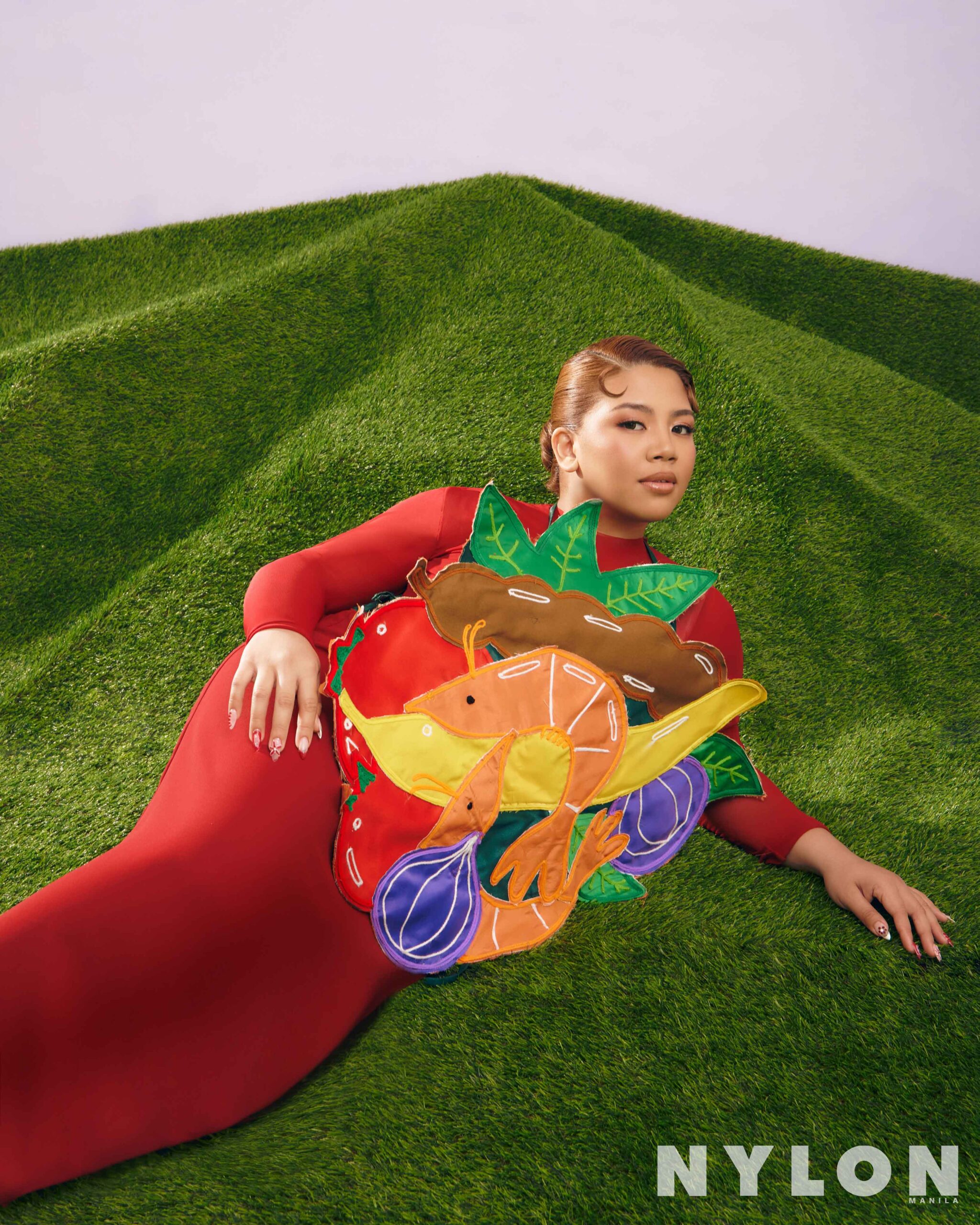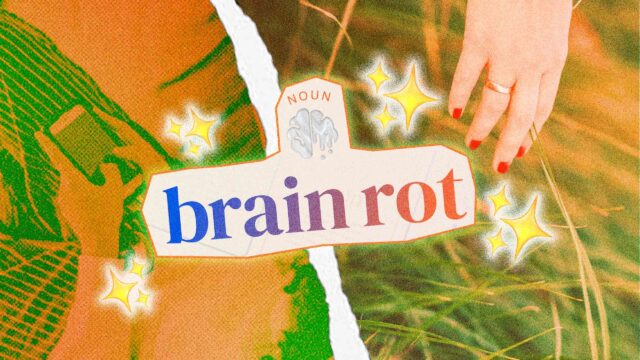As the internet learns more about Filipino food, it cannot help but fall in love with it. Abi Marquez shows us the best that Filipino cuisine (and culture) has to offer the world.
Food: more than something we need to eat everyday, it flavors our everyday. Good food has the power to uplift our moods and get us through tough times. From casual conversations with friends to intimate moments with loved ones, it brings us closer together and is there for us even in the loneliest of moments. Let’s be real: nothing has seen you at your lowest quite like the craving you had at 2am (and the delivery driver who brought it to you – but that’s just between you and them).
“Food is happiness,” begins Abi Marquez – content creator, James Beard Award nominee, Forbes Asia 30 Under 30 lister, and first-ever Pinoy Webby Award winner. “Because for me, it’s not just for sustenance or something that gives you energy, but it affects your mood. And personally, when I eat something delicious, I’m happy. So, for me, I use it as a tool to make other people happy as well.”
TikTok’s Lumpia Queen burst onto the scene with her love of Filipino food and a dream. Going beyond turning the most unexpected foods into lumpia, which is what earned her her famous moniker, Abi is on a mission to spread the honest truth that Filipino food is awesome. Learn in her own words some of the reasons why it deserves to be celebrated and recognized globally, and how we can use this as a way to enhance and preserve our culture.
Related: Let Her Cook: How Abi Marquez Became The Head Chef Of TikTok Food Content
LEAVING NO CRUMBS
“I think that’s the power of food. Aside from it being for just sustenance, it also carries a cultural significance. Because food has history behind it. It also tells us about our values as Filipinos – that we’re resourceful, and we use the ingredients available to us,” Abi explains. For her, the choice to make content that showcases Filipino food was easy – because it’s something she’s genuinely proud of. As we all should be. Not only is it delicious, it is naturally Gen Z-coded in the sense that it has always had sustainability at its core. “Filipinos have a lot of sustainable practices. Being resourceful or adapting. Adaptability is one of our greatest traits. And in terms of food, it’s taking a foreign influence and changing that recipe up to our taste or to what’s available to us.”
Examples of this can be seen everywhere in our daily menus – from the ulams we grew up with to the commercially available fast fixes we now have the money to purchase as young adults. “So, for example, we have kare-kare, which apparently is Indian-inspired. Aside from it telling us our history, that there are Indian settlements in the Philippines, it also tells us about our values as Filipinos, that we’re resourceful, and we use the ingredients available to us, which is peanuts, coconut milk, a variety of vegetables,” Abi points out. Another talked-about instance is our trademark sweet spaghetti, which inspires both love and confusion from foreigners. While all dishes vary in how much of an acquired taste they are, they can all be appreciated for the decades of culture they carry in their intention and ingredients lists.

Top and skirt by @aaron.dechavez , Aaron De Chavez, Embroidered bib top by @_ha.mu_ , ḢA.MÜ, Heels by @smfashion , SM Fashion
Another dish that exemplifies Filipinos’ culture of zero waste is sisig, which the late Anthony Bourdain famously referred to as the best that our cuisine has to offer. “I think it’s very valuable for other people to find inspiration from Filipino food’s nose-to-tail culture, meaning we cook all parts of the pig. We don’t discard anything. Yung dugo, we make dinuguan out of it. Kinakain natin yung utak. Kinakain natin yung snout for sisig. And we also cook the tail.” Such examples of Filipinos’ ingenuity in finding purpose in things that would otherwise go to waste are so abundant in our daily lives that we’re even exposed to it as young children. Abi recalls, “From the trees, yung mga nyog, elementary pa lang tinuturuan na tayo na you can use the milk for recipes. You can use the leaves for packaging. You can use the actual tree for whatever, papel ganun.”
In a time when rampant overconsumption and waste is threatening the environment, and the disparity in wealth distribution is growing to a disgusting degree, to view materials around us as valuable and deserving of maximum utilization is an attitude that this generation desperately needs to spread. And Abi is happy to announce that Filipinos may be seen as thought leaders in this arena. “The world has a lot to learn from Filipino food in terms of sustainability and in terms of values like sharing and resourcefulness.”
SHARING IS CARING
Sharing may not be a trait that exclusively belongs to Filipinos, but it is something that can be seen in the way we prepare food. “When we talk about culture, it’s also a symbol or a representation of our values. For example, we always cook in big batches. If you cook adobo, it’s not gonna be two pieces of chicken simmered in soy sauce. Filipino recipes are always cooked to be shared. We also have the concept of salo-salo. Personally, in my family, when we eat, we sit at the table, the whole family, and we eat together. Which apparently, after a lot of traveling, it’s not an international thing. It’s very Filipino,” Abi observes.
The question of what essentially makes something Filipino, or what even just makes a dish a dish, is something that all chefs have to answer with every decision they make in the kitchen. As an artform that touches so many lives, experimentation and creativity is not only expected but required. “Innovation is important because it keeps the culture active and we have to understand that culture or food continues to evolve whether we like it or not. That’s what also inspires my content,” Abi says. As the world changes, we must change with it, and this is exciting. But it also begs the question: how do we still honor our cultural roots?
For Abi it’s about doing your research and understanding what’s at the core of something before trying to change things up “The essence should still be there, it should still be recognizable. But I think, my general advice is, don’t be afraid of turning things up or changing things up. Know that recipes are a base, and don’t treat them as a restriction.” In saying this, however, she also admits that this can be a challenge when you have a wealth of diversity of interpretation within your own country’s cuisine. “Even in the Philippines, you cannot standardize a recipe, just because of how diverse we are. There’s no one formula. The Philippines itself, it’s an archipelago. Saying that your Adobo, or your way to cook Adobo is the right way is righteous and closed-minded to the fact that there are other Filipinos in other regions who grew up and believe that their Adobo is this. So, just really be open-minded about it, but I think the ultimate criteria would be it’s supposed to be recognizable and it honors the history or the culture behind it.” Honoring the diversity in our culture comes with sharing the space, giving each other the opportunity to shine and be recognized accordingly.
FEEDING THE FEED
Being able to see the differences between cultures, and even within our own culture, is one of the gifts that social media has given us. Abi believes that it makes preserving and sharing our culture easier. “It’s actually doing a good job in making sure the current generation knows about Filipino food. Because it’s where they are. So, we have to fill those spaces with the culture.”

Social media spaces are teeming with culture thanks to creators like Abi. But not all content is created equal. In her view, it’s about being critical with what you consume and what you create. “The best way to use social media responsibly nowadays is to support people who actually make valuable content and that leave a positive, meaningful impact instead of sharing chika or jumping on or supporting empty content that’s mindless.”
In line with her mission to put a spotlight on Filipino food and culture, Abi asks of us all: “Support Filipino talent and local businesses, local stories. On the creator side, you should always take your time into making sure it is authentic. And by authentic, I mean factual. Your resources should be accurate. And that you are telling the story as authentic as possible without sensationalizing, exaggerating, or distorting the story just to get views. Don’t be too tempted to do click-baity stuff at the expense of the people in the video or the culture in the video.” Preserving culture is a huge, complex undertaking. But if we all share in the responsibility and come to the table with open-mindedness and compassion, then the global stage will be a festival that all the world would be honored to behold.
Photography by ALAN SEGUI
Assisted by JEO JINGCO and JOHN LIM
Creative and Fashion Direction by ANDRE JUDD CHANG
Art Direction by GELO QUIJENCIO
Styling by ANDRE JUDD CHANG
Fashion Assistant KURT ABONAL
Assisted by APRIL LOZADA
Production Design by ARJ MADZ of JAGGER STUDIOS
Makeup by ARON GUEVARA (Elijah and Eara) and KATHY ORAN (Abi and Gab)
Hair by PATTY CRISTOBAL (Abi, Eara, and Elijah) and SAM CORBILLON of TRIPLE LUCK HAIR STUDIO BY TLBNS (Gab)
Nails by CATHY BALINGASA of TRIPLE LUCK HAIR STUDIO BY TLBNS (Abi, Gab, and Elijah)
Shoot Coordination by JASMIN DASIGAN
Managing Editor RAFAEL BAUTISTA
Brand Associate BIANCA LAO
Grab your copy of the Generation Now MyZine Print Issue featuring Elijah, Abi, Gab, and Eara now HERE.
Continue Reading: Realizing The Power Gen Now Has To Affect Change With Abi Marquez, Gab Mejia, Eara Cayanga, And Elijah Canlas
The Never-Ending Fight For Social Justice With Elijah Canlas





